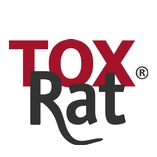You do not want to perform a statistical evaluation yourself, but prefer to contract this out? Then you have found the right partner.
Structured. Independent. Reliable.
We offer an independent, systematic and comprehensive evaluation of your data, a transparent evaluation process including comprehensive documentation and a detailed and descriptive report within the agreed timeframe.
You can program statistics - but you cannot program "evaluation".
Interlaboratory comparisons are the means of choice to validate new test methods and new guidelines - also in ecotoxicology.
This first means testing for validity, outlier analysis and determination of ecotoxicological endpoints such as NOEC, ECx or LID - in each case for different variables and for all laboratories involved.
After that, the actual evaluation begins: the determination of reproducibility and repeatability using appropriate methods of interlaboratory comparison statistics (usually according to ISO 5725-2, or the new ISO 5594:2022, respectively.
In the course of our many years of experience with ring test evaluations, we have learned: There is not a " one size fits all " approach. We do not work according to a fixed scheme. We do all we can to derive sound and maximum information from your data.
And we are not afraid to say what doesn't work.
By biologists for biologists
The relevant guidelines for ring test statistics are made for physical-chemical measurements, not for biotests.
As biologists with statistical know-how, we not only have the requirements of ISO 5725 in mind, but also know about the special features of biotests and how to combine both.
This has been recently confirmed by the new ISO 5594:2022 (contribution: Toni Ratte, Benjamin Daniels).
Keeping an overview.
What was the question again ...?
Huge amounts of data and complex evaluation processes are challenges we´d like to meet. In doing so, we change the perspective from time to time and do not lose sight of your question.
Plain language and a clear message.
Reproducibility, repeatability - and now what does that mean?
Evaluation is more than just adding up results. And no matter how complex the evaluation is - it is possible to present the results in a comprehensible, clear and well-structured way. You just need to be willing.
Sensitive handling of unpublished test data and participating laboratories as well as absolute discretion are a matter of course.
We will be pleased to make you a quotation without obligation.
References
Ongoing projects
Research project ‘International ring test to consolidate the OECD 301 tests on ready biodegradability’.
Financial support: Federal Environment Agency, Project manager: Hydrotox GmbH
ToxRat's task: Evaluation of ring test statistics
Harmonised field testing for springtails and mites
Financial support Federal Environment Agency, Project manager: Cloverstrategy LDA, Portugal
Working packages ToxRat: Advisory for statistical analyses, lead and responsibility for statistical evaluations, statistical guideline recommendations
Pilot project on the impact of plant protection products on the biodiversity of insects and spiders
Financial support: Baden-Württemberg State Agency for the Environment (LUBW)
Project manager: Research Institute for Ecosystem Analysis and Assessment (gaiac)
ToxRat’s tasks: Statistical correlation analyses of relationships between existing PPP exposure and insect data
Completed projects
2023
Statistical Evaluation of a Ring Test about Variable Exposure Testing of Algae
Part 1: Semi Static System
Financial support: Crop Life Europe (CLE), Brussels, Belgium
2022
Statistical evaluation of an international ring test with Glyceria maxima (ring test 3)
Financial support: ECPA (European Crop Protection Agency), Organised under the Auspices of the SETAC Aquatic Macrophyte Ecotoxicology Group (AMEG)
2021
Ecotoxicological evaluation of construction products; Work package 2: Statistical evaluation of an inter‑laboratory test with DSLT and percolation test eluates in an aquatic biotest battery; Financial support: Federal Environmental Agency (UBA), Forschungsprojekt FKZ 3719 37 302 0 UBA-FB-00
Statistical Evaluation of the validation ring test for the new Algae Growth Inhibition Test on Microplate (Draft DIN 38412-59)
Organization of the ring test: Arbeitskreis NA 119-01-03-05-01 AK „Biotests“
Financial support: Wasserchemische Gesellschaft – Fachgruppe der GDCh; Bundesministerium für Umwelt, Naturschutz und nukleare Sicherheit (BMU), Umweltbundesamt (UBA) und Gesellschaft Deutscher Chemiker (GDCh), Projekt „Normung Wasserwesen“
2020
Statistical Evaluation of a round robin test as part of the EU Project Sullied Sediments: Determination of the toxic effect of sediment samples using the Algae Growth Inhibition Test (based on DIN 38-412 L33 and DIN EN ISO 8692)1 and the Bacteria Luminescence Test (DIN EN ISO 11-348).
Financial Support for Evaluation and Report: Interreg North Sea Region Program ERDF, Hamburg Port Authority, D-20457 Hamburg
2019
Statistical Evaluation of an International Ring test according to ISO/DIS 10872; Determination of the toxic effect of soil samples on growth, fertility and reproduction of Caenorhabditis elegans (Nematoda); Organization of the Ring Test: Dr. Sebastian Höss, Ecossa, Germany
Financial support: Wasserchemische Gesellschaft – Fachgruppe in der GDCh, Germany; Bundesministerium für Umwelt, Naturschutz und nukleare Sicherheit (BMU), Umweltbundesamt (UBA) und Gesellschaft Deutscher Chemiker (GDCh), Projekt „Normung Wasserwesen“
Statistical evaluation of an international Ringtests with Glyceria maxima (Ringtest 2)
Financial support: ECPA (European Crop Protection Agency), Organised under the Auspices of the SETAC Aquatic Macrophyte Ecotoxicology Group (AMEG)
2018
Round robin test of the use of microwell plates and Erlenmeyer flasks in the marine algae test with Phaeodactylum tricornutum according to DIN EN ISO 10253 (2016).
Organization: Working Comitee NA 119-01-03-05-03 „Marine Biotests“
Sponsor: Wasserchemische Gesellschaft – Fachgruppe in der GDCh
Financial Support: Bundesministerium für Umwelt, Naturschutz und nukleare Sicherheit (BMUB), Umweltbundesamt (UBA) und Gesellschaft Deutscher Chemiker (GDCh), Projekt „Normung Wasserwesen“
2017
Statistical evaluation of an international Pre-Ringtests with Glyceria maxima
Financial support: ECPA (European Crop Protection Agency), Organised under the Auspices of the SETAC Aquatic Macrophyte Ecotoxicology Group (AMEG)
Statistische Auswertung des Wiederholungsringtest zu Normungsprojekt ISO 19040 des DIN NA 119-01-03-05-09 AK „Genotoxizität und hormonelle Wirkungen (Xenohormone)“
Internationaler Ringtest mit Verfahren zur Bestimmung des estrogenen Potentials von Wasser und Abwasser, ISO/CD 19040, Water Quality – Determination of the estrogenic potential of water and waste water Part 1: Yeast estrogen screen (Saccharomyces cerevisiae)
Auftragggeber: DVGW-Forschungsstelle am Engler-Bunte-Institut des Karlsruher Instituts für Technologie (KIT), Bereich Wasserchemie und Wassertechnologie; Sponsor: Gesellschaft Deutscher Chemiker e.V., Frankfurt a.M.
2016
Statistische Auswertung eines Internationalen Ringtests mit Verfahren zur Bestimmung des estrogenen Potentials von Wasser und Abwasser
Normungsprojekt ISO 19040 des DIN NA 119-01-03-05-09 AK „Genotoxizität und hormonelle Wirkungen (Xenohormone)“ : ISO/CD 19040, Water Quality – Determination of the estrogenic potential of water and waste water Part 1: Yeast estrogen screen (Saccharomyces cerevisiae); Part 3: In vitro human cell-based reporter gene assay
Auftragggeber: DVGW-Forschungsstelle am Engler-Bunte-Institut des Karlsruher Instituts für Technologie (KIT), Bereich Wasserchemie und Wassertechnologie, Sponsor: Gesellschaft Deutscher Chemiker e.V., Frankfurt a.M.
Statistische Auswertung eines Ringtests zur ökotoxikologischen Bewertung der Umweltverträglichkeit von Bauprodukten für Außenanwendung. EU-Bauprodukteverordnung: Empfehlungen für eine Testbatterie.
Forschungsprojekt des Umweltbundesamtes, FKZ 3712 95 309:
2014
Statistische Auswertung der Vergleichsuntersuchungen des marinen Algentests mit Phaedactylum tricornutum nach DIN EN ISO 10253
Sponsor: DIN Deutsches Institut für Normung e.V., Normenausschuss Wasserwesen (NAW), Berlin
Statistische Auswertung und Qualitäts-Bewertung der Ergebnisse eines Ringtests zur Bestimmung der akuten Toxizität von Abwassser auf Zebrafisch-Eier (Danio rerio), (DIN EN ISO 15088), Auswertung nach DIN 38402-45
Auftraggeber: Umweltbundesamt, Projekt Nr. 33466, Z6-20 112-1/5
2012
Statistische Auswertung eines internationalen Ringtests mit Myriophyllum aquaticum und Myriophyllum spicatum
Auftraggeber: ECPA (European Crop Protection Agency): Myriophyllum Toxicity Test - Results of a Ringtest Using M. aquaticum and M. spicatum Grown in a Sediment-Water-System, Organised under the Auspices of the SETAC Aquatic Macrophyte Ecotoxicology Group (AMEG)
Statistische Auswertung eines internationalen Ringtests mit Myriophyllum aquaticum gemäß ISO/DIS 16191
Auftraggeber: Bundesanstalt für Gewässerkunde, Koblenz
2011
Organisation und Statistische Auswertung eines internationalen Ringtest mit Myriophyllum spicatum
Auftraggeber: Umweltbundesamt, Ökotoxikologie-Labor, FKZ: 363 01 294
2009
Beurteilung des Effektes von Abwasserbehandlung anhand des Vergleichs von Ergebnissen verschiedener Biotests von verschiedenen Labors
Biotests: u.a. Ceriodaphnia Reproductiontest ISO-20665, Algae Inhibition Test ISO 8692, Growth Inhibition Test Lemna ISO 20079, Fish Egg Test DIN 38415-T6.
Auftraggeber: Eawag, CH;




